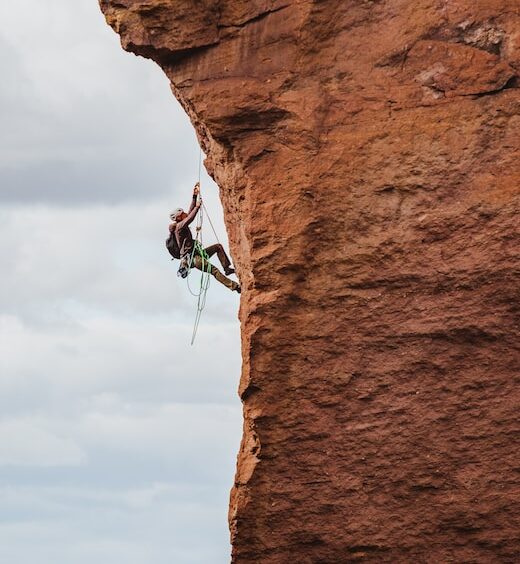Sport climbing is a practice that offers numerous beautiful discoveries, but when approaching this technique for the first time, it’s important to take certain precautions. That’s why we have decided to create this short practical guide for beginners who want to start this discipline.
Different types of climbing
As you may know, there isn’t just one style of climbing, but rather several. Let’s see below what they are and how they differ:
Sport climbing: This discipline can be practiced both indoors and outdoors, and it involves using specific tools for safe climbing, such as ropes, carabiners, harnesses, and quickdraws. Typically, in sport climbing, the lead climber starts the climb by placing quickdraws on pre-installed bolts, clipping the rope, and once they reach the top, they anchor themselves. Afterward, the other climbers can begin their ascent.
Bouldering: A particular technique within sport climbing, bouldering involves climbing boulders, whether natural or artificial, with heights ranging from 7 to 8 meters. In this case, boulderers do not use harnesses, ropes, or helmets, but crash pads are placed beneath them to cushion any falls. This technique can be practiced outdoors on natural rock formations or indoors at climbing gyms. Bouldering is popular among climbers of all levels: beginners use it to familiarize themselves with climbing techniques, while experienced climbers use it to strengthen their limbs.
Traditional climbing: This style of climbing involves climbers placing their own protection gear as they ascend and removing all the protection during the descent. There are no pre-prepared routes with bolts, so climbers must possess a certain level of concentration and experience.
Free climbing: In free climbing, climbers use protection gear solely for safety purposes and not to aid their ascent.
Free solo: This is the most extreme form of climbing, where climbers do not use ropes, harnesses, or any form of protection during the climb. This means that the slightest mistake can be fatal. Renowned climbers in this field include Alex Honnold and Alain Robert, who have scaled numerous rock faces and skyscrapers worldwide.

Where and how to start climbing
If you’ve decided to take up climbing, we recommend visiting your local bouldering gym as a first step. The staff can introduce you to the discipline, let you rent the necessary equipment, and have your first session. You might also consider enrolling in a course to learn various climbing techniques and meet other climbers with whom you can climb in future sessions. Having good climbing partners to share your adventures and experiences with is a great way to fully appreciate this practice.
Clothing and equipment needed to start
As a beginner, it’s not necessary to immediately purchase all the climbing gear since you can rent it at gyms. You can start by purchasing a comfortable pair of climbing shoes, but for other tools, we recommend trying out different options to find what suits you best before making a permanent purchase. However, once you own your equipment, it should be regularly inspected for signs of wear and replaced as necessary.
When it comes to clothing, it’s advisable to wear comfortable attire that allows for freedom of movement and easy reach. A T-shirt or tank top, along with lightweight and breathable pants, will suffice.
Physical preparation
Starting climbing doesn’t require an ultra-muscular and well-conditioned physique. It’s more important to work on your balance and tendon adaptation. Unlike muscles that can adapt to the new demands of climbing within a few weeks, tendons are slower to adapt and need to be prepared accordingly. Pay attention to the signals your body gives you and don’t make the mistake of thinking that climbing every day will help you adapt faster. This could cause pain and difficulties that hinder your practice. As mentioned earlier, your body needs time to adapt to the new stimuli, and it’s important to allow it that time.
One thing that can certainly help from a physical perspective is stretching. Stretching helps improve flexibility, enabling you to reach farther and maneuver into tighter positions. Additionally, incorporating stretching sessions after each climbing session helps your muscles recover more quickly.
Conclusion
If you’re new to the world of climbing or interested in getting started, we hope this guide has been helpful in addressing your doubts and inspiring you to pursue this rewarding sport.